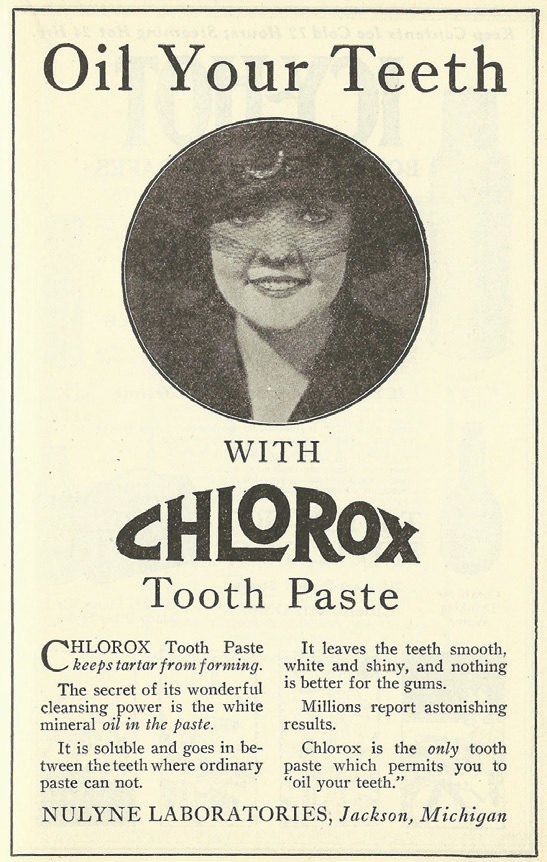A brush with history
Evan Zabawski | TLT From the Editor November 2018
A look at the early days of White Oil.

“A new product to compete in the lucrative cosmetic and pharmaceutical markets.”
Due to the rising popularity of Vaseline in the 1870s, refiners at the Russian oil center of Baku sought to develop a similar product, but they were met with an impossible hurdle. Vaseline was made from Pennsylvania crude, which consists of linear, branched chain aliphatic hydrocarbons, specifically the waxy paraffinic chains, but Baku crude consists of cyclic naphthenic hydrocarbons that are essentially wax free and will not solidify at room temperature.
This unique composition was studied by Russian chemist Vladimir V. Markownikov who developed a chemical process for purifying the lubricating oil portion of Baku crude oil. He found he could react out all the chemically active components by agitating the oil with fuming sulfuric acid, rendering the remaining oil colorless, odorless and tasteless.
The Branobel refinery in Baku, built in 1875 by Robert and Ludwig Nobel, brothers of Alfred Nobel, produced lubricating oils to compete with Pennsylvania oils; with Markownikov’s discovery, some of the lubricating oil was purified into a new product to compete in the lucrative cosmetic and pharmaceutical markets. By 1878 this oil was traded in Europe as “Vaseline Oil” but was known in the U.S. as “Russian Oil.”
In the 1880s another Baku refiner, Oehlrich and Co., referred to its product as “White Vaseline Oil” and eventually simply “White Oil.” To better serve shipping to the higher-demand market westward from Russia, Oehlrich and Co. relocated their refinery to Riga (now in Latvia) and built another in Hamburg, Germany, while the Nobel brothers built one in Antwerp, Belgium. This arrangement worked very well until the Great War, when the exports almost stopped completely.
In 1917 L. Sonneborn Sons, Inc., (now Witco Corp.) began refining White Oil in Petrolia, Pa. Just a few weeks later, the Standard Oil Co. (Indiana) (later merging and becoming Amoco, now BP) would also start producing White Oil at its Whiting Refinery near Chicago, creating a resurgence in supply and popularity.
Among the more unique uses of White Oil came from the O.F. Schmid Chemical Co., established in 1901 in Jackson, Mich. In 1919 the company changed its name to Nulyne Laboratories and marketed its own toothpaste under the brand name Chlorox, which it called “The
Smooth Tooth Paste.”
In one 1919 ad, Nulyne claimed Chlorox “purges where the searching brush cannot reach” and would give “that clean taste” and smokers would not have “smoker’s taste.” In another ad, the company added that each tube contained “290 inches of creamy cleanser” that was “milled to assure perfect smoothness.”
By March 1920 Nulyne changed the slogan to “The Milled-in-Oil Tooth Cleaner” and its ads stated, “Chlorox contains a wonderful element…White Russian Oil.” A later ad stated, “The secret of its wonderful cleansing power is the white mineral oil in the paste” and that “Chlorox is the
only toothpaste which permits you to ‘oil your teeth.’” In February 1921 a preferred stock offering flyer claimed Nulyne was manufacturing 300,000 tubes of Chlorox toothpaste each day.
When Nulyne managers tried to register the trademark for Chlorox, they were promptly sued by the Electro-Alkaline Co. (makers of a bleach product called Clorox, for which they would rename the company in 1928). The case is now cited as an example of trademark law where “a prior use of a trademark will also be denied protection where he seeks to apply his mark to dissimilar goods which he had never contemplated as an extension of his business and to which the mark has been applied by another in good faith.” In short, Nulyne prevailed because bleach products would not be used in oral hygiene products.
Today White Oil continues to be used in cosmetics and pharmaceutical applications—but not toothpaste.
Evan Zabawski, CLS, is the senior technical advisor for TestOil in Calgary, Alberta, Canada. You can reach him at ezabawski@testoil.com.